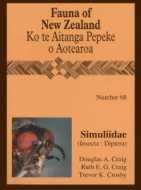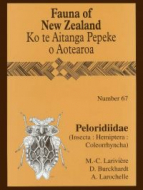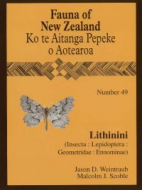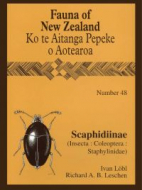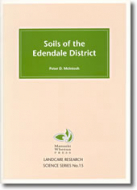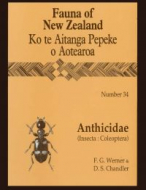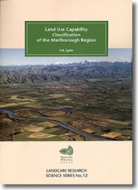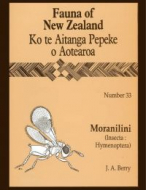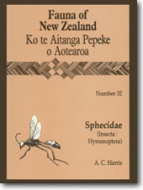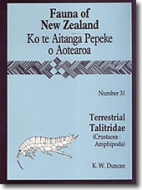
- Agriculture
- Architecture & Design
- Arts & Photography
- Biography
- Business
- Calendars and Diaries
- Childrens (All)
- Childrens (Illustrated)
- Childrens (Picture flats)
- Childrens (Te Reo)
- Classics
- Cooking, Food & Drink
- Craft & Hobbies
- Design (Art / Graphics)
- Design (Interiors)
- Education
- Fashion
- Fiction & Literature
- Fiction - Young Adult
- Gift Ideas
- Health & Wellbeing
- History
- Home & Garden
- Humour & Gift
- Instead of a Card Poems
- Military
- Music
- New Zealand
- NZ (History)
- NZ (Landscapes)
- NZ (Pictorial)
- Poetry
- Reference
- Religion & Faith
- Science & Nature
- Sport & Recreation
- Stationery
- Taschen : 40th Anniversary Edition
- Taschen : BA Basic Art
- Taschen : BU Bibliotheca Universalis
- Te Reo Māori
- Transport
- Travel
Science & Nature (252)
|
Fauna of New Zealand 68 : Simuliidae
ISBN: 9780478347340 Author: Douglas Craig Publisher: Manaaki Whenua Press Black flies, sandflies, te namu Black flies, sandflies, te namu Bind: paperback Pages: 336 Publication Date: 04-03-2014
Tag: Science & Nature |
$95.00 |
|
|
Fauna of New Zealand 67 : Peloridiidae
ISBN: 9780478347302 Author: M-C Larivière Publisher: Manaaki Whenua Press The family Peloridiidae or moss bugs are primitive members of the insect order Hemiptera. Often called ‘living fossils’, peloridiids belong to the suborder ... The family Peloridiidae or moss bugs are primitive members of the insect order Hemiptera. Often called ‘living fossils’, peloridiids belong to the suborder Coleorrhyncha and live in the wet moss of temperate and subantarctic rainforests. Seventeen genera and 36 species are known from Chile, Argentina, New Zealand, New Caledonia, and eastern Australia. Bind: paperback Pages: 78 Publication Date: 04-03-2014
Tag: Science & Nature |
$48.00 |
|
|
Fauna of New Zealand 49 : Lithinini
ISBN: 9780478093575 Author: Jason Weintraub Publisher: Manaaki Whenua Press Lithinini are one of the most widespread tribes of ennomine looper moths, being represented on every continent except Antarctica. These small, narrow-bodied mot... Lithinini are one of the most widespread tribes of ennomine looper moths, being represented on every continent except Antarctica. These small, narrow-bodied moths are one of the few groups of herbivorous insects for whom ferns are a primary food source. New Zealand’s lithinine moth fauna is wholly endemic and for a relatively small country, surprisingly diverse, having three genera comprising eight species. In fact it’s not so surprising, because New Zealand’s forests provide an optimal environment for these moths, which exploit ferns as their primary food source, and are well adapted to life in temperate rainforest with high pteridophyte diversity and biomass. Bind: paperback Pages: 48 Publication Date: 28-02-2014
Tag: Science & Nature |
$24.50 |
|
|
Fauna of New Zealand 48 : Scaphidiinae
ISBN: 9780478093537 Author: Ivan Lobl Publisher: Manaaki Whenua Press There are about 1400 species of Scaphidiine beetles worldwide. Robust beetles, generally black in colour and shiny, their interesting body form, morphology and... There are about 1400 species of Scaphidiine beetles worldwide. Robust beetles, generally black in colour and shiny, their interesting body form, morphology and biology make this group one of the more intrinsically interesting members of Staphylinidae. Although their relatives are predatory, all scaphidiines feed on fungus and often have very well defined host-use patterns. New Zealand is particularly important to the development of a stable classification for the entire world fauna, because it contains some of the most primitive members of the group. Bind: paperback Pages: 94 Publication Date: 28-02-2014
Tag: Science & Nature |
$37.50 |
|
|
Soils of the Edendale District
ISBN: 9780478093001 Author: Peter McIntosh Publisher: Manaaki Whenua Press Although the Edendale district of Southland has a large area of high class soils, up until now the detailed soil distribution has never been mapped. Recently, a... Although the Edendale district of Southland has a large area of high class soils, up until now the detailed soil distribution has never been mapped. Recently, an increase in dairy farming in the district, legislative change regarding effluent disposal, and opportunities for horticultural diversification have created a requirement for better knowledge of the soils in the area. Bind: paperback Pages: 36 Publication Date: 10-02-2014 |
$30.00 |
|
|
Fauna of New Zealand 34 : Anthicidae
ISBN: 9780478045475 Author: F Werner Publisher: Manaaki Whenua Press The Fauna of New Zealand series has been widely acclaimed for its role in presenting New Zealand's unique invertebrate fauna to the world. The Fauna of New Zealand series has been widely acclaimed for its role in presenting New Zealand's unique invertebrate fauna to the world. Bind: paperback Pages: 64 Publication Date: 10-02-2014 |
$26.50 |
|
|
Land Use Capability Classification of the Marlborough Region
ISBN: 9780478045413 Author: I Lynn Publisher: Manaaki Whenua Press Landcare Research Science Series No. 12 Landcare Research Science Series No. 12 Bind: paperback Pages: 222 Publication Date: 10-02-2014 |
$30.00 |
|
|
Fauna of New Zealand 33 : Moranilini
ISBN: 9780478045383 Author: J Berry Publisher: Manaaki Whenua Press The Fauna of New Zealand series has been widely acclaimed for its role in presenting New Zealand's unique invertebrate fauna to the world. On-line extracts of ... The Fauna of New Zealand series has been widely acclaimed for its role in presenting New Zealand's unique invertebrate fauna to the world. On-line extracts of this edition are available. Bind: paperback Pages: 82 Publication Date: 10-02-2014 |
$29.95 |
|
|
Fauna of New Zealand 32 : Sphecidae
ISBN: 9780478045345 Author: A Harris Publisher: Manaaki Whenua Press The Fauna of New Zealand series has been widely acclaimed for its role in presenting New Zealand's unique invertebrate fauna to the world The Fauna of New Zealand series has been widely acclaimed for its role in presenting New Zealand's unique invertebrate fauna to the world Bind: paperback Pages: 112 Publication Date: 20-12-2013 |
$33.50 |
|
|
Fauna of New Zealand : Terrestrial Talitridae
ISBN: 9780478045338 Author: K Duncan Publisher: Manaaki Whenua Press The Fauna of New Zealand series has been widely acclaimed for its role in presenting New Zealand's unique invertebrate fauna to the world The Fauna of New Zealand series has been widely acclaimed for its role in presenting New Zealand's unique invertebrate fauna to the world Bind: paperback Pages: 128 Publication Date: 20-12-2013 |
$36.00 |


